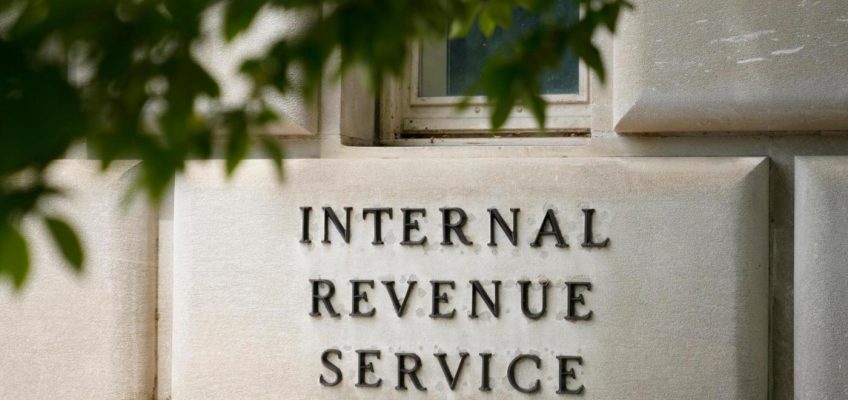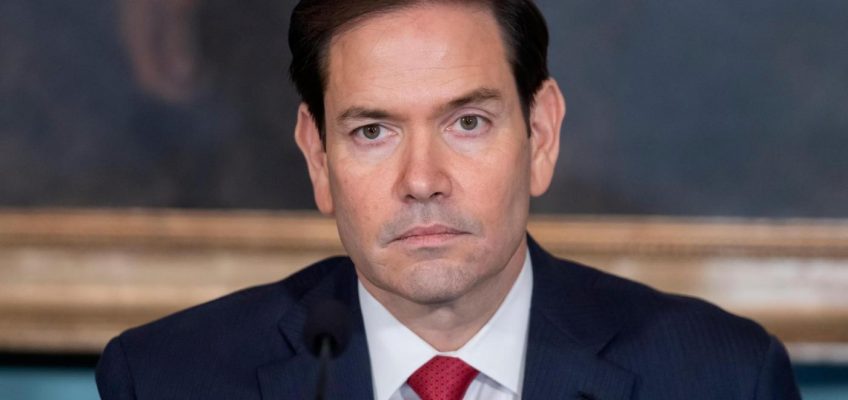On July 4, 2002, my childhood home just south of Kerr County flooded after a heavy rainstorm moved through the Texas Hill Country, hitting the headwaters that feed the Medina and Guadalupe rivers hard. That morning 23 years ago, I, age 8, woke up in a cabin at an overnight summer camp near Kerrville rattled but safe after a night of timber-shaking thunder and rain, not knowing that 20 miles away my mother and brother were taking refuge in the attic of our home as the waters rose around them.
Twenty-three years later, over this past Fourth of July weekend, I was attending a small family wedding in Boerne, hearing about nearly 30 missing camp girls, around the same age I was all those years ago, who were swept away overnight by a wall of floodwater from the Guadalupe River. It’s a different camp, different year, different creek, but the same story. This story—the one where the Hill Country experiences devastating and unexpected flash floods following an intense period of extended drought—is a familiar one for those of us who grew up in the area.
There was a six-year drought in the 1950s that ended with floods in the spring of 1957. There was the extreme drought of 1970 and 1971 that ended with floods in August of 1971. There were dry summers in 1967, 1978, 1991, and 1998, all of which were followed by flooding caused by remnants of tropical storms and hurricanes. This isn’t to mention the infamous 1987 flood that washed away a bus carrying 43 campers near Comfort, resulting in the deaths of 10 teenagers, a tragedy that old-timers still talk about today in hushed voices.
Extreme flooding events are nothing new to Texas. Neither are droughts. And the first does tend to follow the second here. This weather reality has likely been exacerbated by climate change, with models projecting warming ocean waters leading to more severe and more frequent rainfall events, partnered with and exacerbated by extreme heat. John Nielsen-Gammon, the Texas state climatologist and a Texas A&M meteorology professor, has found a 20 to 40 percent increase in extreme rainfall over the past century. This trend is in line with global projections of more frequent extreme weather.
In the parts of the Hill Country known as “Flash Flood Alley,” a geographic area subject to rapid onset flooding, the changing climate, manifested through extreme weather paired with the distinctly harsh and rugged landscape, can lead to particularly deadly scenarios. The Balcones Escarpment, which forms the eastern edge of the Hill Country and runs westward, is a geological feature that has steep terrain, limestone, shallow soils, and narrow river channels: a recipe for fast and erosive flood waters. Paired with frequent drought, the terrain of much of the Hill Country dips, dives, and rolls, crafting perfect funnels for water when it does eventually rain.
In the summer of 2002, much of South Texas and the Hill Country was experiencing a bad drought. On June 30, that changed. It began to rain. A lot. There had been isolated thunderstorms in the days prior, but nothing like what was to follow. Before dawn on July 1, heavy rain began to hammer Bexar and Bandera Counties. The San Antonio International Airport received 9.52 inches of rain, setting a record not just for the historic daily rainfall but for the entire month. July 2 wasn’t much better, with rains hammering the region once more. Heavy rainfall continued off and on until July 6.
Needless to say, Wallace Creek, which flowed through the back edge of our 10 acres, and all other waterways throughout the area flooded. Badly. My family was spread out across the Hill Country—my sister in Comfort with an aunt and uncle, me at a camp near Kerrville, my dad and oldest brother staying a few miles from our house with a fellow volunteer firefighter and family friend, and my mom and my other brother at our house. The water came from the headwaters upriver, farther west and north of our family home. The rain funneled into those tributaries, gathering and spiraling down into and beyond the little valley where our house huddled.
Much like the most recent rains that devastated Hunt, Kerrville, and Ingram, the water came fast and hard. Under the cover of nightfall, Wallace Creek, usually 102 feet across at its widest and one foot deep at its deepest, stretched out of its banks toward our house, over 200 yards away, before swallowing it nearly to the roofline. My brother, having heard the rain hammering the tin roof of our little home, woke up, immediately slipping on his house shoes before shuffling off to my room to look out the window. He stood there, staring into the darkness until lightning flashed, and he was eye-level with swirling brown flood waters lapping against the glass panes. A terrifying beat of confusion, then a scream from my mother across the house as she surely saw the same thing. He pivoted backward, suddenly aware of the water pooling around his feet. They tried to flee, but there was nowhere to go. There was no escape. The house was already underwater. In haste and panic, my mom grabbed her favorite shoes and her chihuahua, Zorro. My brother, his most cherished teapot.
They fled up a rickety drop-down ladder to the attic as they watched the water rise higher and higher, the rain pounding the roof just inches from their heads. My mom and brother spent hours in the attic waiting for the water to drop enough to flee. Emergency services, which were largely volunteers located over 30 miles away, could not reach them. My father, some eight miles away, tried to contact my mom and brother to no avail. When he reached out to other volunteers who were closer to where we lived, he was told that they could only see the roof and that everything else was underwater. He was told there was no sign of his wife or his stepson and that no one was answering the phone. There was no one and nothing to help them.
Eventually, a neighbor with a backhoe drove up to the house when the water dropped to see if anyone was still around, and they were able to evacuate. My brother rode in the bucket as the backhoe navigated the flood waters. They ended up sheltering across Wallace Creek at the Medina Children’s Home. When they turned on the TV, the 1995 film Waterworld was playing.
What happens after the flood and the waters have receded? What comes after all that is left are fractured memories and moldy floorboards?
The camp I was at got around 30 inches of rain. The cabins, which were on relatively high ground and several hundred yards from the creek, were safe. We were safe. We spent the day doing service work for the camp, picking up dead fish stranded by the receding water and chasing one another around with living crawfish, which we eventually released back into the muddy creek. My mother worked at that camp in the front office. When I went to say hello after breakfast, my mom’s coworker stood out on the porch and told me she took the day off and would be in tomorrow, a strained smile on his face. In reality, she hadn’t called in, and they couldn’t reach her. They had no idea if she was alive. I wasn’t informed about the flooding at home until I was picked up at the end of the week.
We don’t know exactly how much rain fell on our home. The rain gauge ended up underwater. However, from reports written up after the fact, I can safely assume we received upwards of 35 inches of rain. To put things into perspective, Hurricane Katrina dumped up to 15 inches of rain on New Orleans; the heaviest rainfall during Hurricane Harvey in Houston reached 50 inches. But such measurements can’t quite explain the devastation of such events.
When I returned home after the creek receded, things were different. Mud and sand lined our floors. I could look up at the water stains, showing the high-water marks well over my head. I found bass the size of housecats dead and rotting out in the fields. There were holes in the walls of our house where flood water and debris forced their way in. The wood flooring buckled from water damage, and the rugs were ruined. There was no power and, ironically, no water. The birthday present given to me later that summer (a stuffed animal mouse) was stained purple halfway up its torso from the flooding: a reminder of rising waters that sticks in my memory to this day. We had a few new kayaks from upriver stuck up in the live oaks. The tree across the highway where my great-grandparents once courted one another had been felled. There was a truck-size hole in the back field from Wallace Creek churning and pulling up massive chunks of soil and carrying them off somewhere downriver. Twelve people died during the 2002 floods. Ours was just one of the 48,000 homes damaged by the flooding.
What happens after the flood and the waters have receded? What comes after all that is left are fractured memories and moldy floorboards?
Flash floods seem to come from nowhere—unexpected, sudden, terrifying. They seemingly manifest as sudden and inevitable events. This simply isn’t accurate, though. Weather events such as the one that led to the 2002 floods were exacerbated by a number of things: an ongoing drought, weather patterns leading up to the rain, as well as the implementation of policies and practices of the landowners near the headwaters. There were other things that directly influenced why our house, in particular, was dealt such a hard blow compared to those immediately around us. We lived in a valley where a caliche county road snaked around and behind us, tilting uphill. All of the runoff from the rain that hit our neighbors further up the county road surged down into our little valley at speed. Our house was essentially at the bottom of a funnel crafted long before we lived there. This, all on top of the surging waters from Wallace Creek. The flood did not come from nowhere: It was an effect of larger historical, structural, and environmental processes.
If this is true, though, then who is to be held accountable for the destruction that follows such processes? Everyone? No one? The federal or state government? Local officials? Individual politicians? Voters? When our home flooded, my father blamed those upriver who built dams, trapping Wallace Creek’s water so they could have a swimming hole, which ultimately dried out our part of the creek. Flood waters spread faster over dry land. My mother blamed everything, including her own bad luck, but she especially blamed the fact that the house hadn’t previously been marked as in a flood zone by the Federal Emergency Management Agency (FEMA), which left them unaware of the danger when they bought the house. Things aren’t in a flood plain until, suddenly, they are. But who is to say that any one thing is responsible for flooding events like these? Blame for such sudden and widespread damage and violence is hard to pin down.
In the weeks after the 2002 flood, I, the youngest in my family by eight years, was sent away to my grandparents for a bright summer spent swimming in their pool, eating popsicles, and playing cards. My older siblings and parents stayed at our house and tried to undo the damage wrought by the flood. There isn’t any way to undo that damage, though. No matter how much you scrub the floors, walls, and windows, there will still be a trace left behind.
The floodwaters infiltrated our home and memories for years to come. The creek that I so loved had caused such drastic damage to my home, entirely changing the landscape. It destabilized my sense of place. Not only did the flood literally change the physical geography of my home, but it also changed my memory. It changed the way I marked time and space. There was a before and after the flood. We were forever remembering the flood.
What happened in Kerrville on July 4, 2025, is both new and familiar. It’s like the stories that I’ve heard recounted at the dinner table, over coffee at the local diner, in newspapers framed on walls, in TikTok stories and Instagram posts. It’s a story eerily similar to what happened in Wimberley in 2015, in Bandera County in 2002, in Comfort in 1987, and in Lampasas in 1957. The list goes on.
There were people who came to help us try and undo the damage wrought on our lives in 2002. Before I was sent away, I recall FEMA showing up at the end of our long gravel driveway. We—my siblings, parents, and I—were all outside wearing gloves and pulling debris out of the fence line while industrial fans from Home Depot ran at full speed inside the house, trying to dry out the flooring. The FEMA representatives, who never made it past the front gate, asked a few questions about how we were faring before giving us a red plastic bucket and a mop. Even at age 8, I knew the inadequacy of such a gesture, no matter the intent behind it.
This memory is counterposed by another. A Saturday when family friends, coworkers, and neighbors showed up in force to help clear debris, fix fences, clean, and cook. With the communal labor came a sense of joy and comradery: jokes shared over teetering wheelbarrows, sweaty brows, and calloused hands—smiles and laughter. I may not know who is to be held responsible for such catastrophes, but I have a sense of to whom we, as community members struck by such violence, are responsible. One another.
We lived in that house for another 15 years, the high-water marks still visible on the cypress trees down by the creek. We built a berm between ourselves and the creek. Every hard rain, we would trek up the little rise and stare at the creek warily, watching and waiting for it to reach out of its banks again. In 2016, my parents sold the home. I haven’t stepped foot in those waters in nearly a decade, but I can still hear the rushing sound echoing across the years and haunting my memory every time a drought ends.
The post I Remember the 2002 Fourth of July Hill Country Floods. This Year, the Water Returned. appeared first on The Texas Observer.



